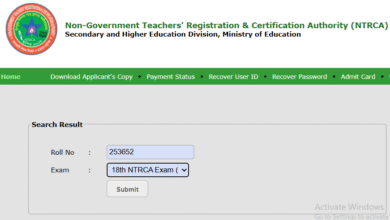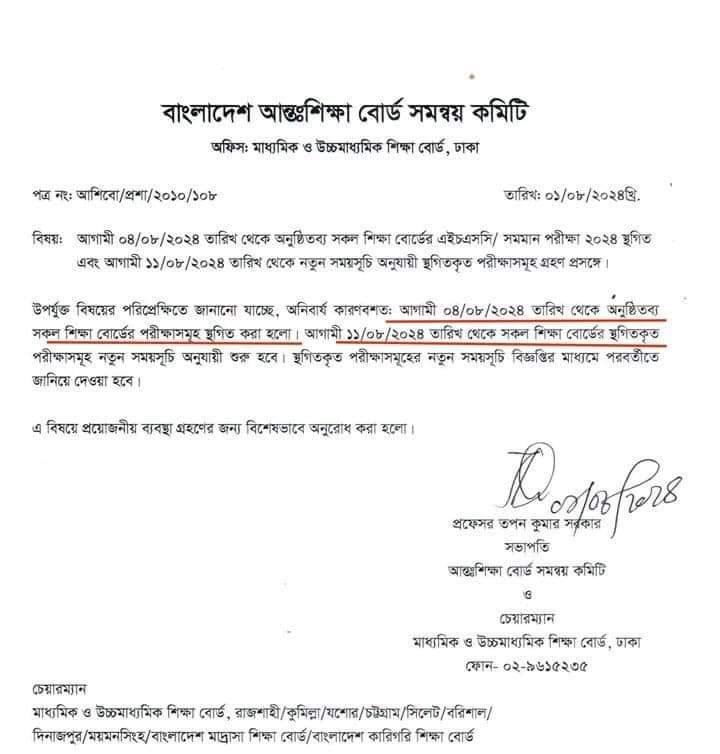Class 6 English Half Yearly Exam Question Answer | ৬ষ্ঠ শ্রেণির ইংরেজি অর্ধবার্ষিক মূল্যায়ন প্রশ্নের উত্তর ২০২৪

Task 1: 6 English Half Yearly Exam Question Answer
Task-1: Activity
Group Discussion Points on Keeping Your Community Green
1. Reduce, Reuse, and Recycle.
2. Plant Trees and Maintain Green Spaces.
3. Promote Energy Conservation.
4. Encourage Sustainable Transportation.
5. Support Local Businesses.
6. Raise Environmental Awareness.
7. Reduce Water Consumption.
8. Clean-Up Campaigns.
1. Reduce, Reuse, and Recycle:
Encourage the community to reduce waste by promoting the use of reusable items.
Set up recycling stations and educate people about what can be recycled.
2. Plant Trees and Maintain Green Spaces:
Organize tree-planting events and adopt green spaces for regular maintenance.
Encourage community gardens where residents can grow their own vegetables and plants.
3. Promote Energy Conservation:
Advocate for the use of energy-efficient appliances and lighting in homes and public buildings.
Educate the community on simple practices to conserve energy, like turning off lights when not in use.
4. Encourage Sustainable Transportation:
Promote walking, cycling, and the use of public transportation to reduce carbon emissions.
Organize carpooling initiatives and set up bike lanes to make cycling safer and more convenient.
5. Support Local Businesses:
Encourage the community to shop at local businesses and farmers’ markets to reduce the carbon footprint associated with transportation.
Promote products that are locally sourced and sustainably produced.
6. Raise Environmental Awareness:
Hold workshops, seminars, and events to educate people about the importance of sustainable living and how they can contribute.
Use social media and community bulletin boards to share tips and success stories on living green.
7. Reduce Water Consumption:
Educate residents on the importance of water conservation and ways to reduce water usage at home.
Promote the installation of water-saving devices like low-flow showerheads and dual-flush toilets.
8. Clean-Up Campaigns:
Organize regular community clean-up events to keep public spaces clean and free of litter.
Encourage residents to take responsibility for their immediate environment by cleaning up their own yards and surrounding areas.
Task 2: Class Six English Half Yearly Exam Question Answer | টাস্ক: ৬ষ্ঠ শ্রেণির ইংরেজি অর্ধবার্ষিক মূল্যায়ন প্রশ্নের উত্তর ২০২৪
Task-2: Activity
Identifying Adjectives and Nouns
Based on the article “Going Green”, here are five adjectives and the nouns they describe:
Explanation of Adjectives and Their Nouns:
Popular Phrase: The adjective “popular” describes the noun “phrase,” indicating that sustainable living is widely discussed and accepted.
Busy Days: The adjective “busy” describes the noun “days,” highlighting how hectic schedules can interfere with community involvement.
Local Groups: The adjective “local” describes the noun “groups,” emphasizing the importance of engaging with nearby community organizations.
Individual Carbon Footprint: The adjective “individual” describes the noun “carbon footprint,” focusing on personal contributions to environmental impact.
Organic Food: The adjective “organic” describes the noun “food,” referring to food produced without synthetic chemicals, which is often part of a green lifestyle.
Task 3: Class Six English Half Yearly Exam Question Answer | টাস্ক ৩ঃ ৬ষ্ঠ শ্রেণির ইংরেজি অর্ধবার্ষিক মূল্যায়ন প্রশ্নের উত্তর ২০২৪
Task-3: Activity
Part a: Questions for Community Leaders
What initiatives are currently in place to promote green living in our community?
How can we encourage more residents to participate in local environmental programs?
What support can the local government provide to enhance our green movement efforts?
Are there any incentives for businesses to adopt more sustainable practices?
How can we effectively educate the community about the benefits of sustainable living?
Part b: Imaginary Conversation
Myself: Good afternoon, Mr. Faruk. Thank you for meeting with me today. I have a few questions about how we can keep our locality green.
Mr. Faruk: Good afternoon! It’s a pleasure to meet you. Please go ahead with your questions.
Myself: First, what initiatives are currently in place to promote green living in our community?
Mr. Faruk: We have a few programs, such as community clean-up events and a recycling program. However, we are always looking for more ways to engage the community.
Myself: That’s great to hear. How can we encourage more residents to participate in these programs?
Mr. Faruk: One way is to raise awareness through local schools and community centers. Hosting workshops and providing information on social media can also help.
Myself: What support can the local government provide to enhance our green movement efforts?
Mr. Faruk: The local government can offer grants for green projects and provide resources for educational campaigns. They can also implement policies that encourage sustainable practices.
Myself: Are there any incentives for businesses to adopt more sustainable practices?
Mr. Faruk: Yes, there are tax breaks and grants available for businesses that implement eco-friendly practices. Additionally, we are working on a certification program for green businesses.
Myself: Lastly, how can we effectively educate the community about the benefits of sustainable living?
Mr. Faruk: We can organize seminars, distribute informational pamphlets, and use social media to share tips and success stories. Engaging schools to incorporate environmental education can also be very effective.
Myself: Thank you so much for your time and valuable information, Mr. Faruk. I look forward to working together to make our community greener.
Mr. Faruk: You’re welcome! I’m excited to see the positive changes we can make together.
This conversation includes:
Use of articles:
“a few questions”,
“the local government”,
“an imaginary conversation”.
Punctuation and capitalization:
Proper use of full stops,
question marks,
capitalization throughout the conversation.
Assertive sentences:
“I have a few questions about how we can keep our locality green.”,
“We have a few programs, such as community clean-up events and a recycling program.”
Formal expressions to welcome someone:
“Good afternoon, Mr. Faruk.”,
“It’s a pleasure to meet you.”
Formal expressions to show respect to other’s opinions:
“Thank you so much for your time and valuable information, Mr. Faruk.”
Task 4: Class Six English Half Yearly Exam Question Answer | কাজ ৪ঃ ৬ষ্ঠ শ্রেণির ইংরেজি অর্ধবার্ষিক মূল্যায়ন প্রশ্নের উত্তর ২০২৪
Task-4: Activity
Analysis of the Poem “Kindness” by Edgar Albert Guest
Part a: Stanza and Rhyming Words
Number of stanzas in the poem: The poem “Kindness” has three stanzas.
First stanza and its rhyming words:
“One never knows
How far a word of kindness goes;
One never sees
How far a smile of friendship flees.
Down, through the years,
The deed forgotten reappears.”
Rhyming words:
“knows” and “goes”
“sees” and “flees”
“years” and “reappears”
Part b: Rhyming Words Table:
Part c: Explanation of the Theme
The theme of the poem “Kindness” relates to the concept of “Living Green” in various meaningful ways. Both kindness and sustainable living emphasize the importance of small, positive actions that can lead to significant, lasting impacts. Just as a kind word or deed can profoundly affect someone’s life, simple, sustainable practices can greatly benefit the environment. These thoughtful actions, whether in human relationships or environmental stewardship, foster a caring and responsible community. Additionally, both themes encourage a compassionate and respectful approach towards others and the planet, highlighting our shared responsibility for a better, greener future.
Adjectives used:
1. Meaningful (ways)
2. Positive (actions)
3. Lasting (impacts)
4. Simple (practices)
5. Thoughtful (actions)



